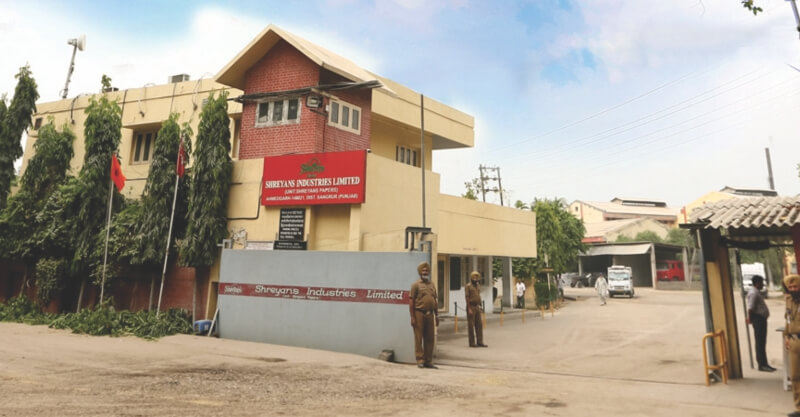This article is a part of Silver Linings to the Corona Cloud feature

Entire humanity has undergone disruption and turmoil during the last one and half years and still continues to be so. Despite rapid progress made in medical fields to contain the spread of COVID-19, the pandemic has defied all predictions and its future course remains unpredictable.
Businesses worldwide had been affected by the pandemic. While quite a few businesses have come out of their worst period, some are performing better than the pre-pandemic period. However, many industries including the paper industry still remain adversely affected.
This situation has forced the management to look into the ways the businesses were being managed in the pre-pandemic period and take steps to minimise the impact of the present disruption caused by the same.
Operations and Workforce Management
Even in the normal course of operations, businesses keep looking into possibilities of improving efficiencies, minimising the resources consumption, and putting the human resources to the best possible use but the current situation has put more urgency in the way management looks into these aspects.
The biggest impact has come on the importance of maintaining working conditions in the mill premises with more emphasis on sanitization and cleanliness. Various protocols and SOPs which were necessary to keep operations running were implemented even though this entailed additional cost. We seriously followed various protocols and as a result, our workforce, by and large, remained unaffected by the pandemic. Vaccination of employees was undertaken in a mission mode and as of date 100 percent of eligible employees stand vaccinated.
In the coming period also, maintaining healthy working conditions will remain a priority for the management.
Maintaining operational efficiencies, conservation of resources and most efficient use of human resources have attained extreme importance due to shrinking margins and will remain so in the times to come.
Supply Chain Management
Fortunately, the supply chain of our various inputs and finished goods remained, by and large, intact even during the pandemic period, as most of the inputs were available in nearby areas, and also markets are situated not very far away from our mills. The central government, after a brief period of complete lockdown, insisted to the state governments to keep the movement of goods-carrying vehicles smooth during lockdown which helped a lot. Still, this disruption has sent a warning signal and businesses would have to keep a constant watch on ever-changing situations and take corrective action wherever necessary to maintain the supply chain intact. Certain unforeseen circumstances like disruption in the supply of oxygen for almost 3-4 weeks was never envisaged and did affect the operations but alternative ways were put in place to minimise the impact.
Market Scenario and Profit Margin
We are engaged in the manufacturing of writing and printing paper. The market of this product was gravely affected and remains so as of date due to the closure of the majority of schools, colleges and other educational institutions. Also, many offices have adopted the ‘work from home’ culture. Consequently, the demand for writing and printing paper has been very adversely affected.
At the beginning of the current year, there was a pickup in demand and consequently, prices of writing and printing paper firmed up once the first wave of the pandemic receded. There was an anticipation that things will normalise very fast and normal academic session 2021-22 will start. However, with the onset of a very severe second wave, these hopes were belied and paper demand and prices went through a spin.
While in most parts of the country, the second wave has shown signs of abating but markets are still apprehensive and unsure about the future.
During last year, the prices of most of the inputs remained low. Unfortunately, in the current year, the cost of all inputs has risen very sharply without any commensurate increase in prices of paper thus, making operations of the paper industry engaged in the manufacturing of writing and printing paper absolutely non-viable.
We do hope that with most of the states announcing to open schools, colleges, and other educational institutions and an uptick in the pace of vaccination, things should move towards normalisation in a short period of time thus giving some relief to this sector. However, much will depend on the spread of disease in the coming period.
Expectations from the Government
I personally do not expect any fiscal or financial support coming from the government in view of the very tight budgetary position which will tie the government’s hand in announcing any relief, specifically for the paper industry. However, a constant watch should be kept on the movement of the international market to avoid any dumping of writing and printing paper in the country from Southeast Asia which affected the industry in the pre-pandemic period. Currently, this threat has receded a bit in view of hardened international prices and a sharp increase in sea freight which make cross-country trade unviable.
Future Outlook
The demand for writing and printing paper has been very adversely impacted on account of the onset of the COVID-19 pandemic due to the total closure of all academic institutions and also partial working of offices, which are the main consumers of writing and printing paper. However, the main drivers for the growth of this sector remain intact, which include significantly higher outlay for universal literacy, more and more emphasis on taking education to the last corner of the country, and also recent announcement regarding new education policy which will entail major changes in the syllabus. This will require massive printing of new books and other study materials.
Another outcome of recent disturbances has been the limitations and adverse impact of online education which has come to the fore. A significant segment of the population has been deprived of education, either due to limited internet coverage or non-affordability of suitable devices, like smartphones, I-pads or other such devices. Many children, especially from rural or remote corners of the country, have dropped out of the education system. Also, a major segment of students, who had the means and resources of getting online education have suffered mental and psychological impacts due to constant exposure to screen time and lack of social interaction with peer groups. Educationists and psychologists are worried about the long-term impact of the same.
Therefore, I am hopeful that once things normalise a bit and schools and other educational institutions open, the physical mode of teaching and learning will get its due, and demand for writing and printing paper will revive very sharply.
I am personally hopeful that by the third or fourth quarter of the current year, the demand for writing and printing paper will come up significantly and this sector will be again on a growth path.




